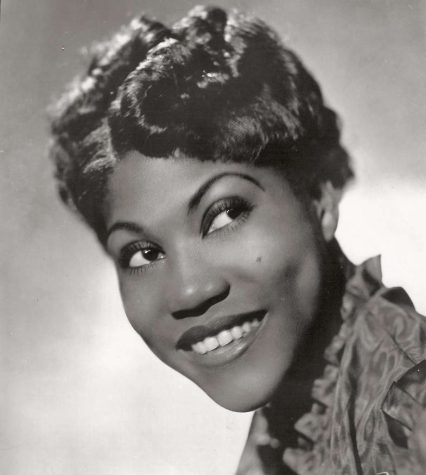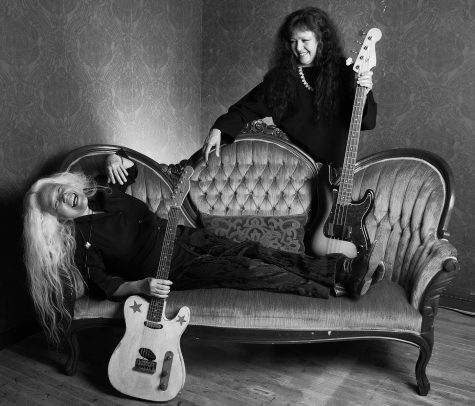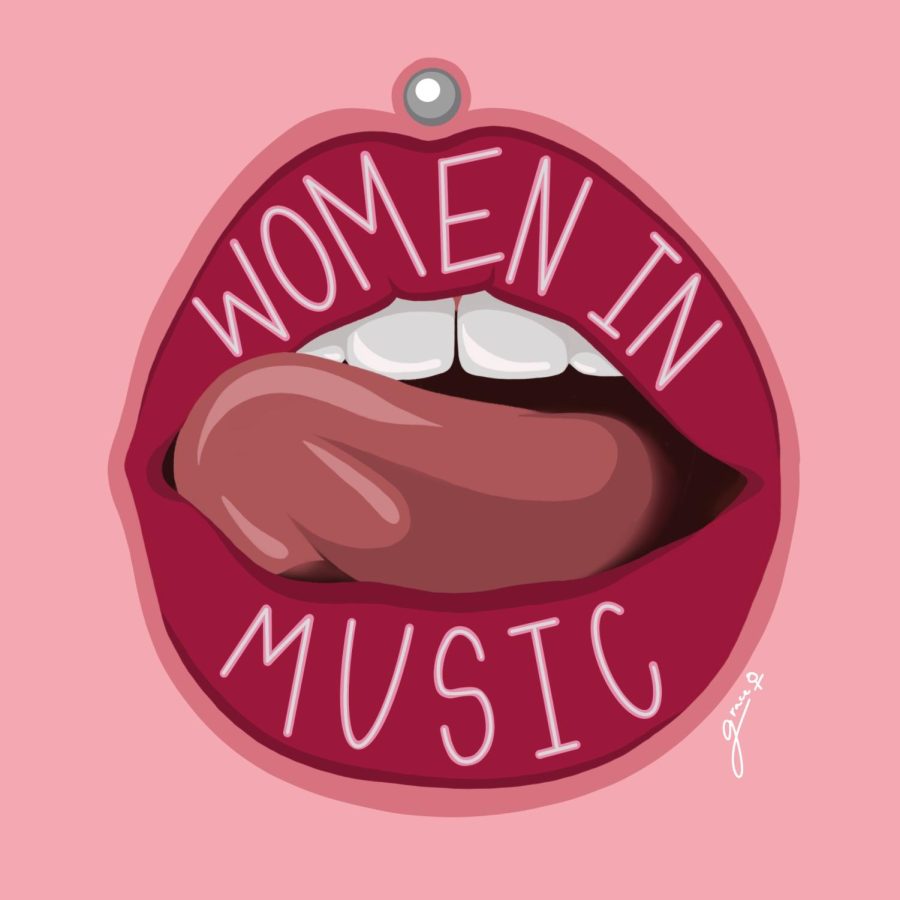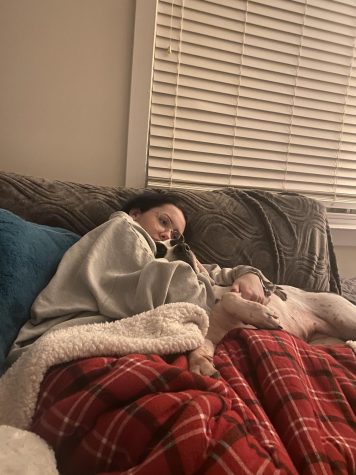Underappreciated Women In Music History
March 29, 2023
Music has been around since the beginning of time, from ancient civilizations to Beethoveen to The Rolling Stones to Justin Bieber and Harry Styles. When talking about the “best musicians” or the “most important figures” in music history, the conversation typically goes towards men. This irritates me because there are so many essential women throughout music history that very few people know about. In honor of Women’s History Month, here are 4 of the many heavily underappreciated women in music history.

Kathleen Hanna (Bikini Kill):
Kathleen Hanna is widely known as the lead singer for the feminist punk band, Bikini Kill, as well as multiple other bands. She is also known as being one of the pioneers of Riot Grrrl, a hardcore feminist movement from the 90s. Her and her band mates took over the punk scene and did whatever they wanted, despite the societal norm for women at the time. She flounced around the stage, often without pants, and tried to perform as obnoxious as those who shamed her for being herself. Hanna wrote about the struggles of being a woman and expressed the emotions women were openly shamed for having, such as anger and pain, as well as pushing other women to do the same. What is so unique about Kathleen and her music is that it takes an aggressive approach, expressing her fury at the world when no other woman was willing to. She pioneered the way for women in rock to be as aggressive as their male counterparts and to do and take what they wanted without fear of judgment. Even without her incredible music career, she took the steps to go further and has become a trauma therapist for women who have experienced abuse. In addition to that, she created a non-profit organization called “Tees4Togo” that sells independent artists’ t-shirt designs in order to raise money for young girls to attend school in Togo. Whether it’s her flourishing music career, or her independent work to benefit women, Kathleen Hanna is an essential part of women in music history.
*Fun fact: Kathleen Hanna is where Kurt Cobain got inspiration for the name of Nirvana’s hit song “Smells Like Teen Spirit.” I would definitely recommend looking into that story.*
(If you want to learn more about Kathleen Hanna and Riot Grrrl, check out the second episode of The Knight Shift Radio, CHS’s student-run radio station on Spotify, where I talk extensively about it and play some of the best music in that genre.)

Big Mama Cass (The Mamas and the Papas):
“Big Mama” Cass Elliot is one of the lead singers of the hit 60s band, The Mamas and the Papas” (Interestingly, she was born in our very own Alexandria, Virginia!). Cass was overweight and at the time, the public took that as an invitation to make her weight her image, but her boastful voice and musical talent shows that that is not who she was. As previously mentioned, Cass was the powerhouse vocalist of The Mamas and The Papas. Their most popular song is “California Dreamin”’, filled with beautiful harmonies and Cass’s impressive vocal talents. The band went on to release four albums, but they broke up in 1968, opening the doors for Cass to start her own solo singing career, making her the the most successful soloist of the band. With hit songs such as her cover of “Dream A Little Dream Of Me” and “Make Your Own Kind Of Music”, Cass was making her way on the charts, at a time where bands like The Beatles and The Rolling Stones ruled the rock genre. It is an indisputable fact that “Big Mama” Cass was one of the best female vocalists of all time and paved the way for plus size women to be taken seriously in a music industry when physical image had such a huge impact on how successful a female artist could be. Sadly, due to relentless fatphobia and comments about her weight from the public, Cass was constantly on dangerous diets, which lead to her passing at the young age of 32 from heart failure. The public even continued to mock her after her passing, spreading the rumor that she died while choking on a ham sandwich. Regardless, over time “Big Mama” Cass has become more and more appreciated for her talents as well as her showing young girls that their weight didn’t have to stop them from pursuing their dreams. If you take anything away from the story of “Big Mama” Cass Elliot, it should that “you’ve got to Make Your Own Kind of Music, sing your own kind of song.”
*Fun Fact: When Cass lived in Los Angeles, California at the height of her The Mamas and The Papas fame, her house was the meeting ground of many famous musicians at the time, even introducing David Crosby and Graham Nash, who went on to form Crosby, Stills, Nash, and Young, one of the most famous bands of the 60s and 70s.

Sister Rosetta Tharpe (aka The Godmother of Rock):
Sister Rosetta Tharpe, also known as “The Godmother of Rock’n’Roll” or “The Original Soul Sister”, was born in 1915 in Arkansas and later became one of the most important people in music history. But you may be wondering why she isn’t a household name such as Elvis Presley or Buddy Holly. It’s because she was a Queer Black woman in the 1930s and 40s, making the music that she wanted. She started playing guitar when she was only 4 years old and by the time she was six, she started touring with her mom, Katie Bell Nubin, playing gospel music for her Church. In the 1930s, Rosetta split off from her mother and began writing, composing, and performing her own music, which was a fusion of gospel and rock’n’roll, and developing her signature guitar style which would later be adapted by notable musicians such as Elvis, Johnny Cash, Carl Perkins, and Jerry Lee Lewis. The people who are known as the “creators” of Rock were inspired by this incredible woman. During her peak of fame, she was forced to sleep in her tour buses and sneak in the back of restaurants she was playing at in order to get food because segregation was still very prominent at this time. Despite all of the negativity and prejudice surrounding her, she still continued to be true to herself and pursue a career doing the thing she loved most, making music. Rosetta Tharpe was a trailblazer of music and has inspired countless musicians and young women everywhere. She makes the list of one of the greatest guitar players of all time and easily tops some of the best male guitar players in history. While she didn’t create the Rock genre, she should still be credited with partially making it what it is today, and where would we be without good ole’ Rock and the genres that were inspired by it? For many years she wasn’t seen as playing such a prominent role in music history, but luckily almost 50 years after her passing, people are starting to give her the recognition she deserves. So remember the name Sister Rosetta Tharpe the next time you listen to Rock or any of its subgenres, and think about all she’s done for music.
*Fun Facts: Her song “Strange Things Happening Everyday” is considered to be, if not the first, one of the first Rock n Roll songs to ever exist. She was also one of the first openly queer people in music. While it was not widely known by the public, close friends and peers in the music industry knew that Sister Rosetta Tharpe was openly Bisexual and went on tour with her partner of several years, Marie Knight. (That is the most punk rock thing I’ve ever heard.)*

June Millington (Fanny):
June Millington is one of two Millington sisters from the band “Fanny”, the first all girl rock group. She was the lead guitarist and sang lead vocals with her sister, Jean. June knew she wanted to be in an all girl rock group from the age of 12. She grew up in Manila, Philippines and saw a person playing a guitar in a room at her Catholic school one day and after that, getting a guitar and being a musician was all she could talk or think about. For her 13th birthday, June’s mother gifted her a small guitar, and her revolutionary music career was underway. The Millington family emigrated to The United States shortly after in the 1960s. They lived in Sacramento and with the Vietnam War, racial tension was high. This made it difficult for the group of young women of color to be taken seriously… well, that and the fact that they were a group of young girls trying to come into a genre controlled by men. Still, they persisted and were so good that they signed a record deal without even having to audition! They paved the way for women in music, becoming the first girl rock group. They were so revolutionary that David Bowie said in a Rolling Stone interview, “They were one of the finest rock bands of their time, in 1973. They were extraordinary: They wrote everything, they were just colossal and wonderful, and nobody’s ever mentioned them. They’re as important as anybody else who’s ever been, ever; it just wasn’t their time. Revivify Fanny. And I will feel that my work is done.” When a star like David Bowie makes a point to talk about an artist like this, you know that they were just that good. Unfortunately, the band broke up in 1975 because their record label wanted them to begin dressing more feminine to sell their music, which led to internal conflict between the band mates. One of the unique aspects of Fanny is that they wanted to bring feminism and women of color in rock to the mainstream, rather than avoiding the mainstream like the plague. They wanted to make their image the new normal, but because they were women (and women of color at that) they fell into the land of the unknown in music, forgotten by society. Do yourself a favor and listen to Fanny, or if you’re more interested in reading about them, check out June Millington’s memoir, “Land of a Thousand Bridges: Island Girl in a Rock & Roll World.” June Millington continues to inspire young women and cheer them on as they pursue a career in music through her summer camp for girls at the Institute of Musical Arts in Goshen, Massachusetts. She was one of the first women in rock and an incredibly talented woman that nobody talks about. Let’s change that.
*Fun Fact: There is a music store in East Nashville called “Fanny’s House of Music”, which sells vintage clothes, local art, a random assortment of knickknacks, and most importantly, instruments. Most of the staff are women and there are images of famous female musicians all over the walls inside the store, to inspire the young kids who also come for lessons there. June Millington recently visited the shop to do a reading for her memoir.”
Well, we’ve come to the end of our list. I hope you all learned something new about a woman you’ve never heard of before and have a new appreciation for women in music history. Of course, this list is never ending and there are so many women that have not been properly appreciated throughout history and music history in particular. Happy International Women’s Month and tell a woman in your life that you love and appreciate her!






